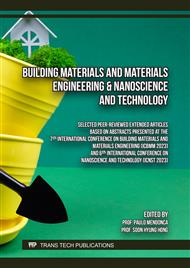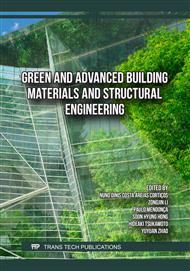p.87
p.95
p.101
p.113
p.119
p.125
p.133
p.143
p.151
Functionally Graded Concrete: Structural Design and Effect on Sustainability Parameters
Abstract:
Researchers have become interested in functionally graded concrete (FGC) in recent years due to its potential to enhance the desired performance. Functional gradation can be carried out in a continuous or stepped/layered manner. Most studies have been conducted on two layered FGC beams by substituting the richer mixes in either tension or compression zone. Previous studies have incorporated and presented the structural design approach of such two-layered beams. Moreover, the layer in the compression zone was assumed to bear entire compressive stresses. Previous studies exhibited savings in cement by up to 37% using a layer of the concrete class defined by exposure conditions around reinforcement and the concrete of minimal structural class. However, using structural concrete of minimal class in the remaining segments may result in a higher reinforcement requirement, reducing the benefits of savings in embodied CO2 offered by reduced cement consumption. This paper examines how designing the beam as a Functionally Graded Reinforced Concrete (FGRC) beam following Indian Standard 456:2016 affects the cost and embodied CO2 based on cement and steel consumption through the durability approach of design, wherein the substitution of the layer is considered in the tension zone. The study revealed that a 10% and 16% reduction in cost and embodied CO2 could be accomplished.
Info:
Periodical:
Pages:
143-149
Citation:
Online since:
December 2023
Authors:
Price:
Сopyright:
© 2023 Trans Tech Publications Ltd. All Rights Reserved
Share:
Citation:



